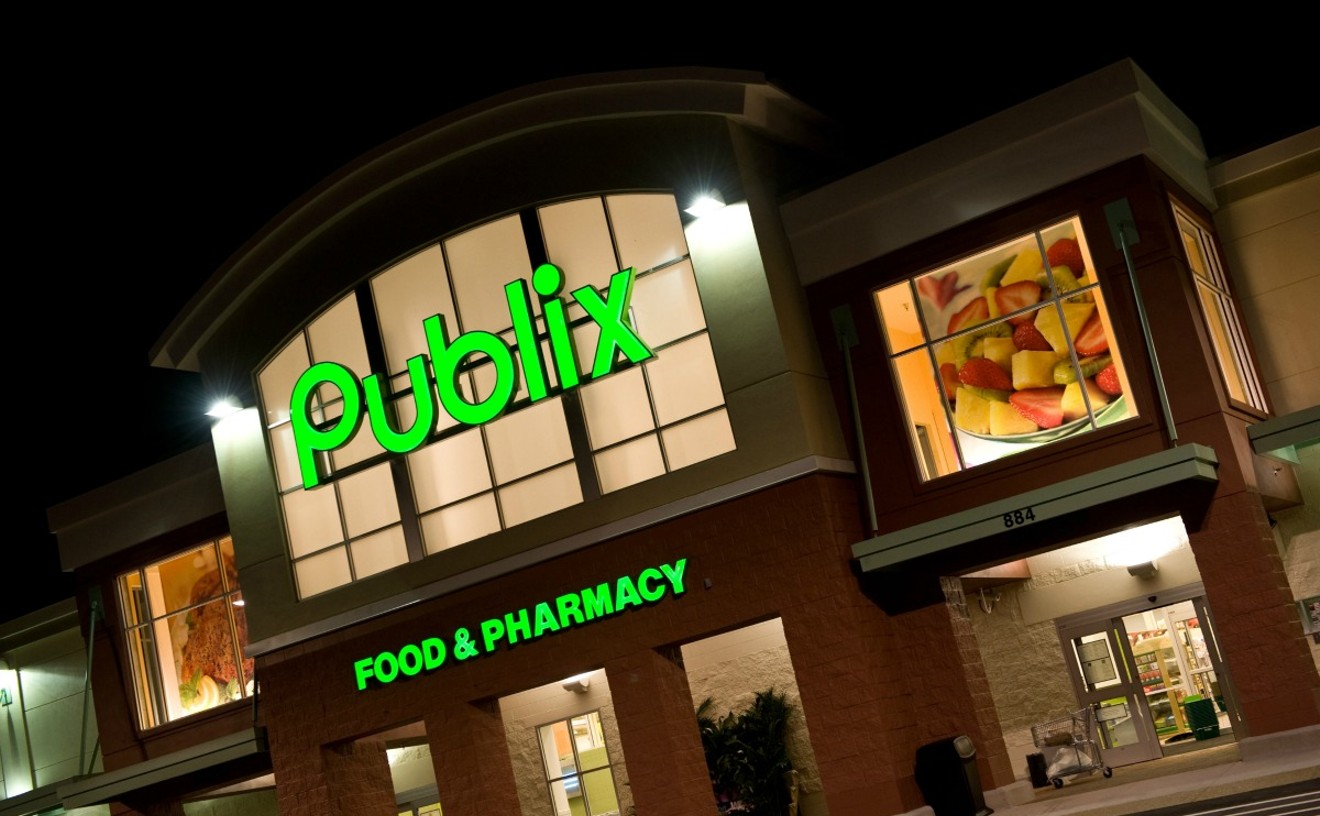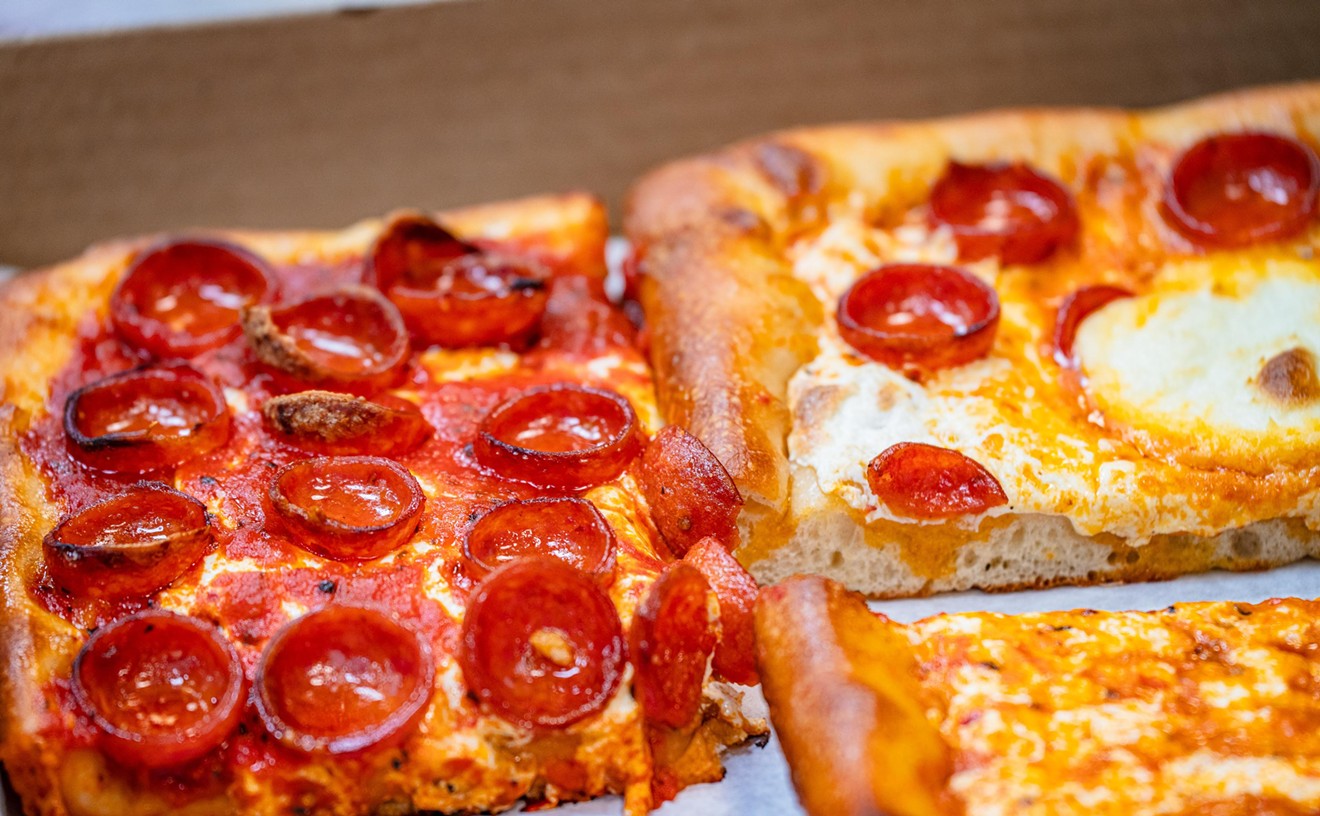Before we begin, we should clarify: Mike Sabin is not only the head chef at Prime One Twelve. He's actually corporate chef for Myles Restaurant Group, the owners of the aforementioned and also Prime Italian, Nemo, Shoji Sushi, Big Pink, and the new Prime Hotel and Lounge.
And what we learned is, though he is elbow deep in beef night after night, his passion is really for the sea's creatures. More on that during the interview when he dishes on what the heck is going on with one of the beach's most beloved restos.
His ocean-related relationship most likely began in Hawaii where the lucky bastard got to go to high school. Surprisingly not every great island dish there incorporates seafood, however. "Hawaii is the only place that serves Portuguese sausage at McDonald's," he recalled. "It's part of the local cuisine. McDonald's also serves Spam." Turns out the pink stuff even appears in sushi rolls out there via Spam musubi. And, yes, Sabin likes the stuff.
Anyhow, the half-Italian Sabin was born in Baltimore and moved around a lot. "Dad was in the military," he explained, "but he never put us on military bases. We adapted really quick." The family traveled all over Europe in a Volkswagen bus and he said his fondest food memory from those days is tasting his first authentic French crepe.
As an adult, Sabin visited Miami and fell in love with the city, yet the thought of culinary school held no such romance. Sabin got hold of the CIA's books and pored over them until he got a good grasp of French technique.
He started as dishwasher and line cook at Starfish where Barton G. is currently. "It was a pretty hot restaurant," he recalled. "Back then I couldn't find jobs. I was probably the only caucasian dishwasher on the beach." After Starfish closed he headed to Nemo hoping to cook with a rising star you might have heard of: Michael Schwartz. He was soon hired as the first chef to work under Schwartz, learning techniques he had never seen before. The year was 1995.
After working up through the ranks, Sabin went to Jonathan Eismann's Pacific Time next, followed by a stint at Mark's. Then he went really big time, working as a sous chef at the famous Inn at Little Washington, a place he described as "immaculate."
Eventually Militello got him to come back, and he left yet again to do some consulting gigs which landed him in New York City during 9/11. Understandably his family didn't want to join him up there so he returned to Miami at the behest of Myles Chefetz. And the rest, as they say, is history.
New Times: Why do you think Prime One Twelve became such a hit in Miami?
Mike Sabin: We've broken the stereotype of bad service on the beach. Of course, we can have our nights...
How many people do you estimate serving each evening?
About 800 reservations a night. Up to 1,000 on the weekends. I think the most we've ever had is 1,200.
Aside from the recent article in Ocean Drive, I never hear much about you...
I'm stealth. [Laughs.] But we're reopening Nemo with a brand new concept in the next couple of months so it's time. And we've talked about doing a coffee table cookbook.
Can you tell me more about the spot?
It will be like Prime One Twelve, but seafood. I'll be bringing in fish from the Pacific, from the Mediterranean, all over the world. You'll have 15 types of fish that you can have grilled, broiled, poached, however you want it, and then you pick your sides, sauces.
It was a great product but it got burnt out with the decor, menu, etcetera. After 10 years you need to start looking. It was time for something new. [Editor's note: This addresses our August 17 post.]
And what makes Prime One Twelve so different than any steakhouse on the beach? There are so many...
Due to the volume and amount of money the restaurant generates I'm able to buy product others can't afford. Our menu is very simple, big, and straightforward.
Where are you getting your steak?
We use, out of Jersey, a third generation meat company. A couple of places tried to use 'em but because of our volume I got inside information. Prime beef is expensive; it's the top two percent of the cattle market. These places can't pay we we do a pound for meat.
What makes your kitchen different?
All dudes in the kitchen. It takes a special guy to work in a kitchen like this. Lots of kids come out of culinary school and last maybe four hours in our kitchen. It's not a good place to start.
How would you describe the scene?
Controlled chaos. We very rarely have a time where everyone is standing around. You turn into a machine. We can comfortably push out about 600 to 700 covers.
Advice to a new chef?
Keep your ego in check, big time. You're doing what grandma did, just on a bigger scale.
Monday we'll chat about white boy barbecue, steakhouse overdose, and Sabin's favorite menu item (hint: it's not cow-centric and it's not really on the menu).










